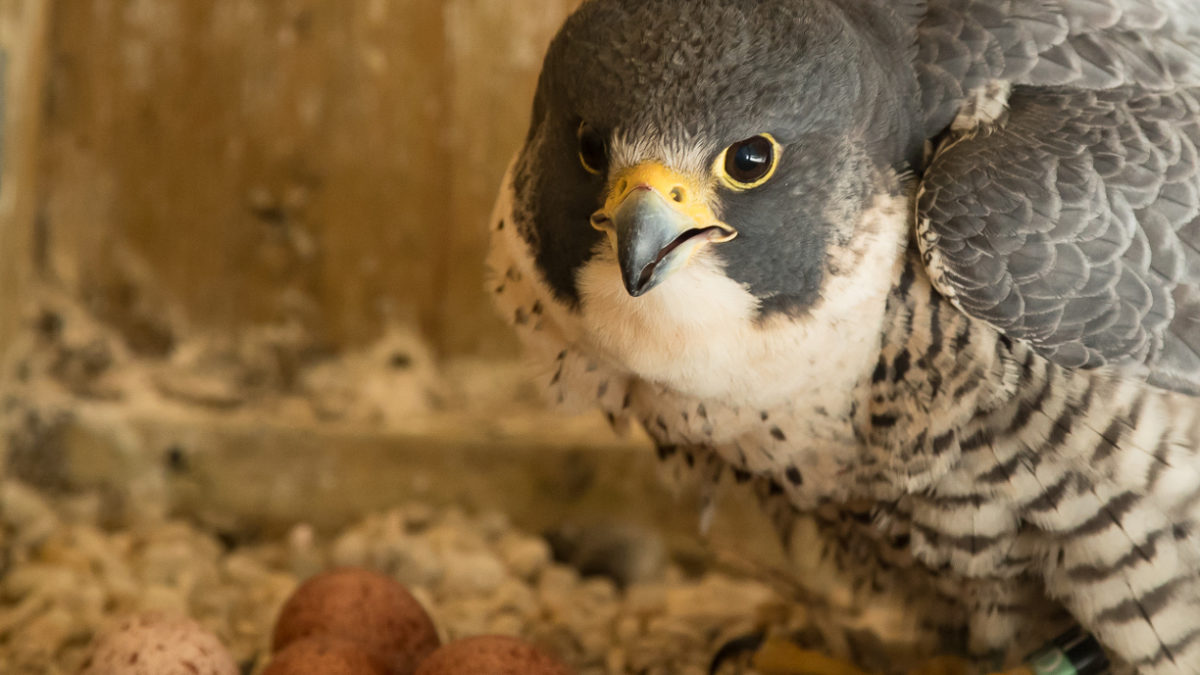Virginia peregrine population continues to climb

Atlantic song sparrow declines
January 10, 2023
Chesapeake Eagles Shift Behavior
January 11, 2023Breeding female on the Eltham Bridge. This female was hatched on Elkins Marsh along the seaside of the Delmarva in 2010 and has held the territory on the Eltham Bridge since 2013 with three successive males. She has been very aggressive and protective of the nest site and has held the territory together. She was found with a wing injury from a collision in December and could not be rehabilitated. She is one of a number of falcons that have been documented to go down in 2022. Photo by Bryan Watts.
By: Bryan Watts
1/10/23
The Virginia breeding population of peregrine falcons continued its climb in 2022 with a modern record of 34 known breeding pairs. The record year extends the ongoing growth of the population. An aggressive restoration program was initiated in 1978 that involved the release of captive-reared birds including 115 on the Coastal Plain (1978-1985) and 127 in the Mountain physiographic region (1985-1993). The first occupied territory was established and the first breeding attempt was documented in 1979 and 1982, respectively. The population proceeded through an establishment phase (1979-1993) driven by releases with an average doubling time of 3.8 years to a consolidation phase (1994-2022), with an average doubling time of more than 20 years. The population has exceeded 28 known pairs for the past seven years. One of the factors driving the increase in the known population in 2022 was a survey of a dozen quarries that resulted in an increase in known occupied quarries from two to four.
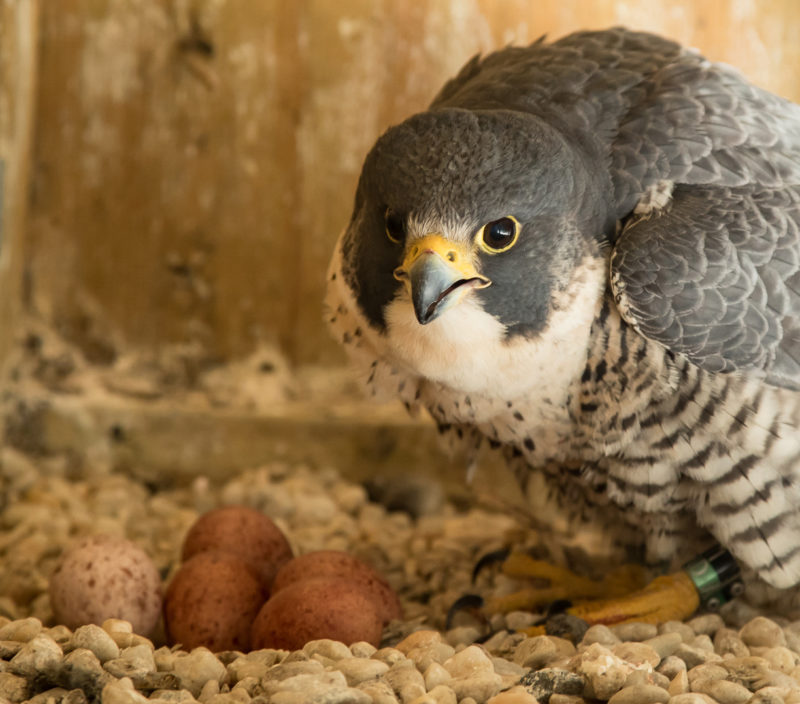
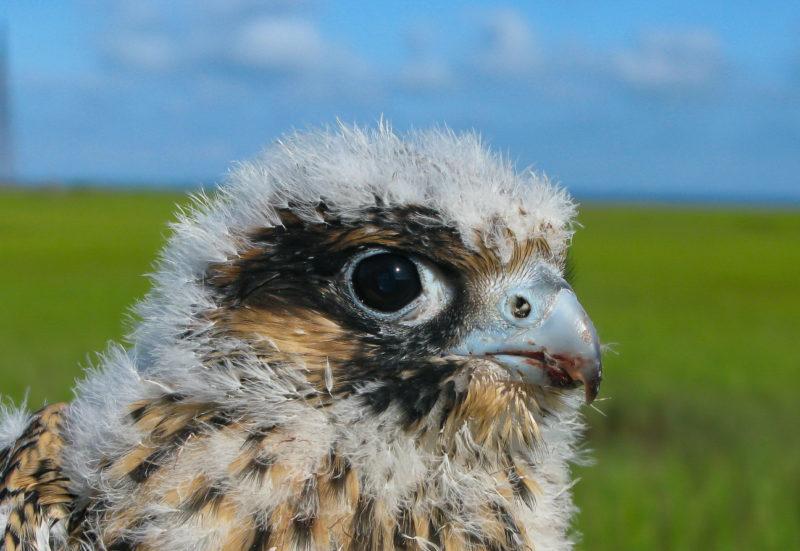
During the 2022 season, the falcon population produced at least 59 young (the outcome of three territories could not be determined), resulting in a reproductive rate of 1.9 young/pair. Although this reproductive rate is lower than most recent years, the population did manage eight 4-young broods. Of 82 eggs followed through to fledging, 65 (79.3%) hatched and 54 (83.1%) of hatched young survived to banding age. Seven pairs were not documented to make breeding attempts including two cliff pairs, two bridge pairs, one tower pair that was newly formed, one tower pair with owl interference and one smoke stack pair where the box was moved prior to the season. Success rate for pairs that made breeding attempts and with known outcome (N = 24) was 79.2%.
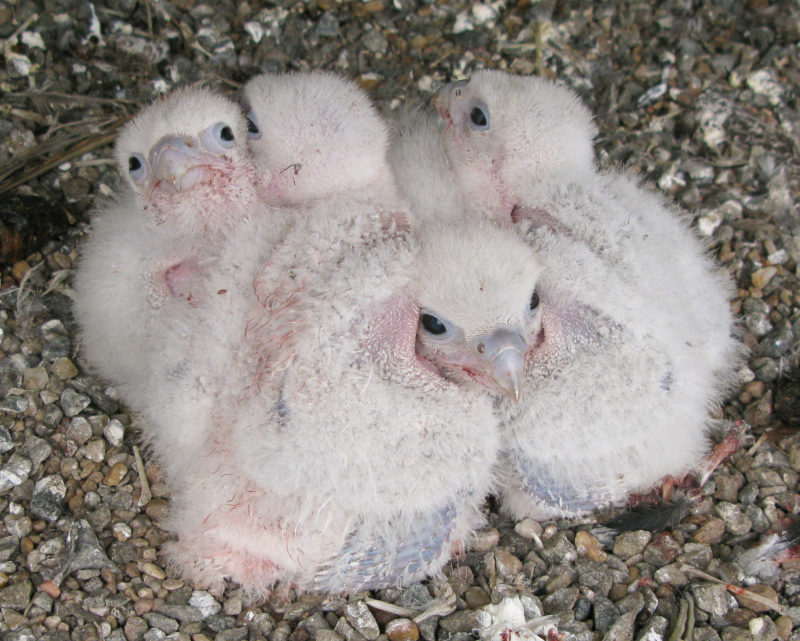
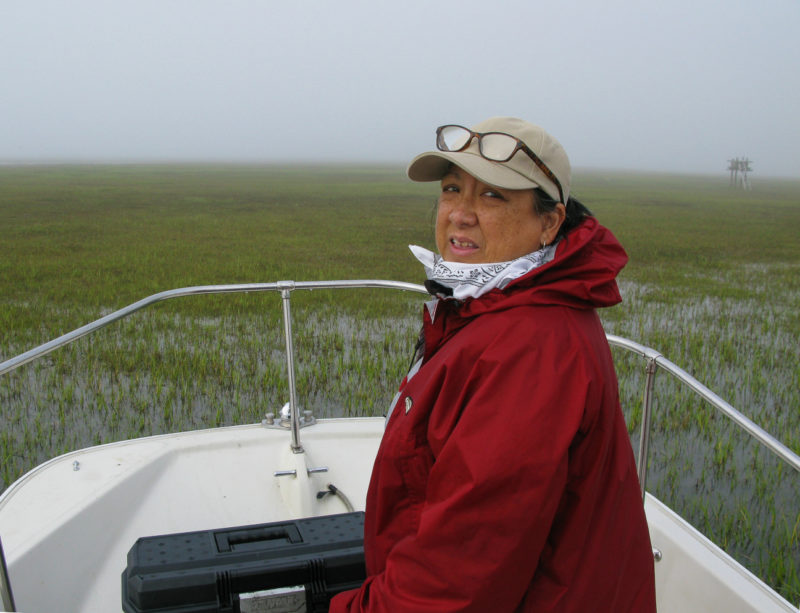
There were several notable observations during the 2022 season. The 20-year-old male that has nested on the James River Bridge for many years was lost before the breeding season and was replaced by an unbanded male. The male breeding on the Berkley Bridge (hatched in Yorktown) was lost after the brood fledged and was replaced by a new male from the River Front Plaza Building in Richmond. The new female nesting on the West Norfolk Bridge was hatched in 2019 on the Devon Power Plant in Milford, CT. We continue to experience problems with fledglings in urban settings, including five known birds that ended up on the ground and had to be rehabbed and released. These included one bird in Norfolk, one bird in Newport News, one bird in Richmond and two birds in Reston. All birds survived except for a young male in Reston. We also continue to have scattered problems with wingless fly infestations. We regularly treat young during brood checks and the birds outgrow the flies. However, infestations may be severe and lead to mortality. During 2022, three of the four young on the Wachapreague tower were lost to flies and the fourth was severely stunted.
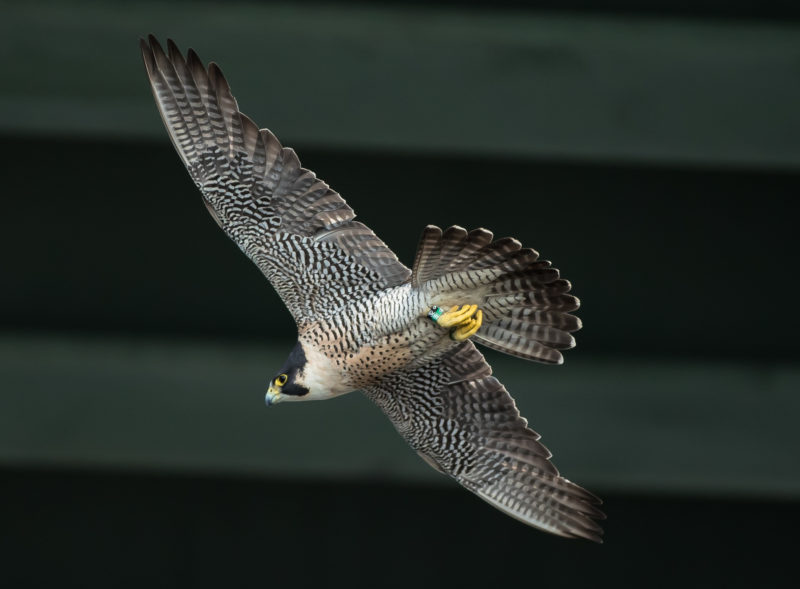
For the 23rd consecutive year, birds were translocated from the coast to the mountains. Four young falcons were moved from the Virginia Beach Westin Hotel to Shenandoah National Park and placed in a hack box on Franklin Cliffs. All birds were successfully released and dispersed from the site.

